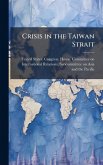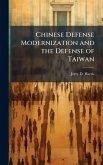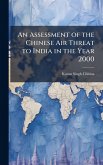Recently, due to the growing economic power and political influence of China, many have speculated the threat of Chinese military action towards the reunification of China and Taiwan has diminished. As the largest developing nation in the world, China has sustained a growth rate of 7% or better since 1980.1 According to Richard Bush, Director of the Brookings Institute Northeast Asia Policy Studies, Taiwanese and Chinese economies are intertwined and becoming more so each day with Taiwanese products manufactured in China maintaining Taiwanese profitability while supporting Chinese industry.2 Indeed, the growing economic interdependence of the two governments substantially supports the premise of a peaceful resolution. Additionally, the People's Republic of China (PRC) evolution as an emerging world superpower dictates responsible behavior including supporting a peaceful solution to the "Taiwan issue." In April 2004, during his testimony to the U.S. House International Relations Committee, James A. Kelly, Assistant Secretary of State for East Asian and Pacific Affairs commented, "China would gain nothing from a conflict. It would undermine a historic transformation through which China has become a respected member of the international community."3 Yet, for the PRC, control of Taiwan runs deeper than mere economics. This work has been selected by scholars as being culturally important, and is part of the knowledge base of civilization as we know it. This work was reproduced from the original artifact, and remains as true to the original work as possible. Therefore, you will see the original copyright references, library stamps (as most of these works have been housed in our most important libraries around the world), and other notations in the work. This work is in the public domain in the United States of America, and possibly other nations. Within the United States, you may freely copy and distribute this work, as no entity (individual or corporate) has a copyright on the body of the work. As a reproduction of a historical artifact, this work may contain missing or blurred pages, poor pictures, errant marks, etc. Scholars believe, and we concur, that this work is important enough to be preserved, reproduced, and made generally available to the public. We appreciate your support of the preservation process, and thank you for being an important part of keeping this knowledge alive and relevant.
Bitte wählen Sie Ihr Anliegen aus.
Rechnungen
Retourenschein anfordern
Bestellstatus
Storno








